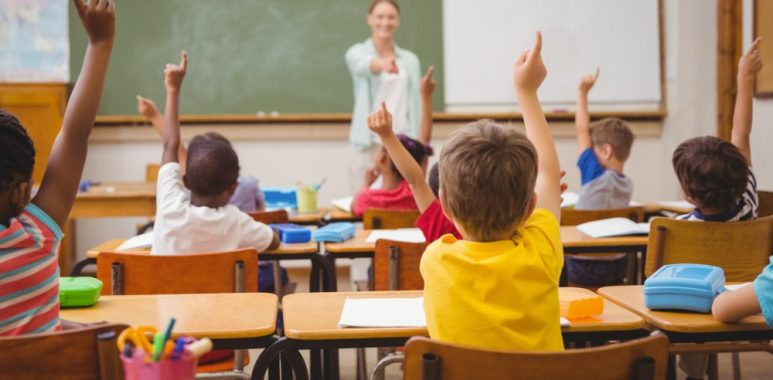
Beyond the Binary: Fostering Gender and Sexual Diversity in Education
As part of an equitable education, it is vital that we recognize and celebrate the diverse gender identities and sexual orientations present in classrooms. Gone are the days when education was limited to rigid binary understandings of gender roles and discussions around sexuality; now schools aim to create environments which accommodate human experiences from diverse viewpoints. In this article we highlight both supporting gender and sexual diversity within education as well as strategies to create inclusive learning environments.
Table of Contents
Understanding Gender and Sexual Diversity
Gender and sexual diversity is a broad term that refers to various identities that extend beyond traditional male/female and heterosexual orientation. This includes transgender people, non-binary/genderqueer people, genderfluid/agender people as well as people who identify with being lesbian, gay, bisexual/queer/asexual etc. Recognizing and respecting all identities involved is key in providing safe educational spaces that celebrate diversity.
Importance of Inclusivity in Education
- Mental Health and Well-Being: Inclusive education has an immense positive effect on the mental health and well-being of gender and sexually diverse students. When students feel accepted and supported for who they are, stress levels tend to drop significantly while self-esteem grows exponentially. Also it should be noted how Education and student sexual health are interrelated too.
- Academic Achievement: Inclusive classrooms not only promote mental wellbeing, but they can also increase academic success for gender and sexually diverse students. Yet students often struggle to manage a daunting workload of essays, research papers and assignments that is hard to manage without help from professional writing services – these services help students find balance between coursework and life; But it’s important to choose carefully! Every student should be warned about papersowl plagiarism issues! Before choosing the right service, it’s better to read a review, like this one: https://www.writingpapersucks.com/papersowl-com-review/
- Reducing Bullying and Discrimination: Cultivating an inclusive environment can help alleviate bullying and discrimination in schools, by actively combatting any biases or any forms of discrimination within school communities, which sends a powerful message that all students deserve respect and dignity.
- Preparing Students for Real World Diversity: Inclusive education settings that embrace real world diversity can benefit students in learning environments that reflect it. Inclusive education helps prepare them to interact with people of diverse backgrounds and identities, cultivating empathy while building mutual respect between those from all different identities and backgrounds.
Strategies for Inclusive Education
- Curriculum Inclusivity: Make sure the curriculum includes diverse voices, perspectives and identities. Include literature, history and art that highlight contributions made by gender and sexually diverse people within its content.
- Secure Spaces: Establish safe zones within the school where students can freely express themselves and their concerns openly, as well as support student clubs or organizations that promote gender and sexual diversity.
- Professional Development: Provide educators with professional development opportunities that allow them to gain an increased understanding of the unique challenges gender and sexually diverse students face, as well as strategies they can employ in providing assistance and support.
- Policy and Protocol Development and Enforcement: Implement policies which explicitly address discrimination on the basis of gender identity or sexual orientation in an accessible fashion for everyone involved.
- Language that Affirms: All school communication and interactions should use inclusive and affirming language that respects students’ selected names and pronouns.
- Support Services: Provide counseling and support services tailored specifically to the unique needs of gender and sexually diverse students.
- Peer Education: Encourage students to become allies for one another within their school communities by participating in peer education and allyship programs. When students band together as allies for each other, school communities become more inclusive.
Challenges and Progress
Although increasing gender and sexual diversity in education may face resistance and setbacks, significant strides have been taken and change often starts with education.
Educational institutions play a pivotal role in shaping society attitudes and norms. By taking an affirmative stance towards inclusivity, schools can contribute to creating an accepting and equitable society. Furthermore, more schools have recognized gender and sexual diversity within education by adopting policies and practices which support students from these categories.
Conclusion
Gender and sexual diversity in education isn’t solely about social justice; it is an essential element of creating an accepting society. When students see their identities reflected and respected within an educational environment, they are more likely to flourish both academically and emotionally.
As we expand beyond binary gender understandings and embrace diversity of identities, we create an inclusive future where all individuals can thrive without discrimination or exclusion. Education becomes an empowering force of positive social change while its ripple effects lead to a more compassionate and equitable world for all.
As we navigate towards a more inclusive future, it is vital to remember that every step counts. By encouraging diversity and accepting students within our educational institutions, we empower students to become agents of change – creating a world which embraces and celebrates the vast spectrum of human experience in all its forms. Together we can build an era where inclusivity becomes standard practice, where gender and sexual identities become integrated parts of society itself.
